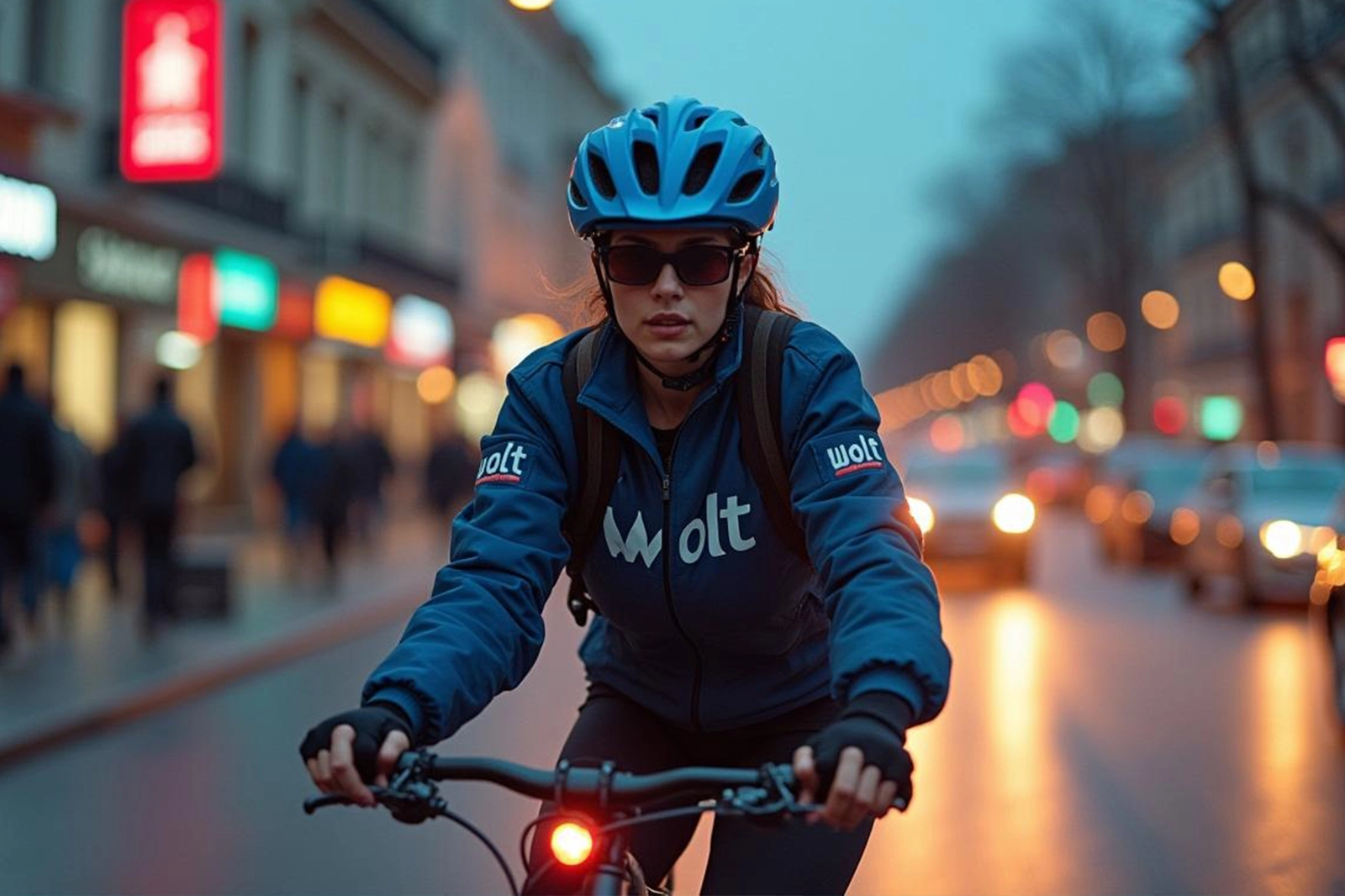
Safety on Wheels: Key Tips for Couriers
Delivering goods in busy urban environments comes with numerous risks. Here are practical tips for keeping yourself protected, using the right equipment, and driving responsibly to safeguard both yourself and others on the road.
Introduction
In recent years, working as a courier has becomeextremely popular—whether it’s delivering food, goods, or packages. However, asthe demand for fast delivery increases, so does the risk of accidents on theroad. In hectic city traffic, safety must be a top priority. Below you’ll findessential advice on protection, proper equipment, and responsible drivingbehaviors.
Why Is Safety So Important?
- Personal Security: Your life and health are paramount. Any accident can have long-term consequences.
- Protecting Others: As a participant in road traffic, you’re also responsible for the safety of pedestrians, cyclists, drivers, passengers, and fellow couriers.
- Protecting Others: As a participant in road traffic, you’re also responsible for the safety of pedestrians, cyclists, drivers, passengers, and fellow couriers.
- Reputation and Professionalism: Couriers who respect traffic regulations and prioritize safety establish a stronger reputation and gain trust from clients and the platforms they work with.
Proper Equipment for Safe Deliveries
Helmet and Protective Gear
- Helmet: If you ride a motorcycle or bicycle, a helmet ismandatory—it can save your life in case of an accident. Make sure it’shigh-quality and certified.
- Pads and Reflective Vest: For two-wheeled vehicles, knee and elbow pads can be useful, especially in slick conditions. A reflective vest keeps you visible day and night.
Clothing and Footwear
- Appropriate Footwear: Sneakers or shoes with non-slipsoles provide better stability on the pedals or when placing your foot on theground.
- Waterproof and Warm Clothing: In rainy or cold weather, layering helps maintain body heat and prevents chills.
Vehicle Maintenance
- Regular Checks: Brakes, tires, and lights must be in goodworking order. Replace worn parts as soon as you notice any issues.
- Clean Mirrors and Headlights: Good visibility is crucial for both you and other road users.
Behavior in Traffic
Respect Traffic Regulations
- SpeedLimit: Don’t exceed the speed limit, even if you’re in a rush to meet delivery deadlines.
- Check Your Blind Spots: This is especially important for two-wheel riders, who often ride between lanes of cars.
Keep a Safe Distance
- Anticipate Movements: Always leave enough space to brake suddenly or maneuver around unexpected obstacles.
- No Phone Handling: If you use a navigation app, set up your route before you start moving or use a phone mount. Never text while driving.
Be Aware of Vulnerable Road Users
- Adjust Your Speed: E-bikes can go faster than traditional bicycles, so be cautious, especially in pedestrian zones.
- Use Bike Lanes: Whenever possible, stay in designated bike lanes to reduce the risk of collisions with cars.
Motorcycles and Scooters
- Predict Situations: Car drivers may not see you, especially when you overtake.
- Lane Splitting: If permitted, do it slowly and carefully.
Cars
- Seat Belt: Always wear it, even for short trips.
- Parking and Delivery: Park responsibly. Avoid pedestrian crossings or bike lanes when stopping to make deliveries.
How to Avoid Stress and Traffic Jams
- Plan Your Route: Check current traffic conditions before leaving. Use apps that show congestion and possible detours.
- Pick the Right Time: If your platform allows, work when traffic is lighter (early morning or late evening).
- Mental Well-Being: Take short breaks or do some stretches when stress builds up. Stay hydrated and maintain regular meals.
How to Avoid Stress and Traffic Jams
Special Tips for Different Vehicles
Bicycles and E-Bikes
- Adjust Your Speed: E-bikes can go faster than traditional bicycles, so be cautious, especially in pedestrian zones.
- Use Bike Lanes: Whenever possible, stay in designated bike lanes to reduce the risk of collisions with cars.
Motorcycles and Scooters
- Predict Situations: Car drivers may not see you,especially when you overtake.
- Lane Splitting: If permitted, do it slowly and carefully.
Motorcycles and Scooters
- Predict Situations: Car drivers may not see you,especially when you overtake.
- Lane Splitting: If permitted, do it slowly and carefully.
Common Mistakes to Avoid
- Poor Vehicle Maintenance: Worn tires or faulty brakes greatly increase accident risk.
- Using Your Phone While Driving: It’s not only illegal but severely impairs concentration.
- Skipping Safety Gear: Many injuries can be prevented simply by wearing a helmet and reflective items.
- Overconfidence: Even experienced drivers need to respect rules and anticipate other road users’ actions.
Conclusion
Courier safety is not just an individual responsibility it’s also part of professional conduct. By investing in proper equipment,maintaining your vehicle, and obeying traffic regulations, you can significantly reduce the chance of accidents. This leads to a more efficient, worry-free work environment and greater satisfaction for customers who appreciate safe deliveries.
If you’re starting out as a courier or looking to improve, follow these tips and always put safety ahead of speed. At the end of the day, your life and health and the well-being of others—matter far more thana few extra minutes or deliveries. Ride safely!





